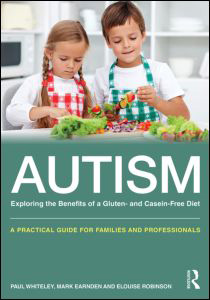|
|
Dietary intervention for autism: a role for gluten and casein? |
|
An extract, by Paul Whiteley of ESPA Research, from a new book, |
The use of a gluten- and casein-free (GFCF) diet for cases of autism continues to generate significant discussions in the lay and research communities. A new book aims to bring together the current collected research on the topic fusing research and practical information on how diet might affect some cases of autism. Autism is a complex condition. Characterised by a dyad of core behavioural symptoms affecting social communicative functions accompanied by the presence of restricted or repetitive actions, significant heterogeneity occurs when it comes to the presentation of the condition. A diagnosis of autism or autism spectrum disorder (ASD) can also place a person at heightened risk of various other comorbid conditions potentially occurring. These range from learning disability to epilepsy to other more somatic issues such as sleeping problems and gastrointestinal (GI) problems being present alongside some cases of autism. For further reading about the topic of gluten- and casein-free diets and autism and hints, tips and recipes for starting and following a GFCF diet, have a look at our book: The book is also available from Amazon. First published May 2014
Click here for more articles on treatments for autism
|













